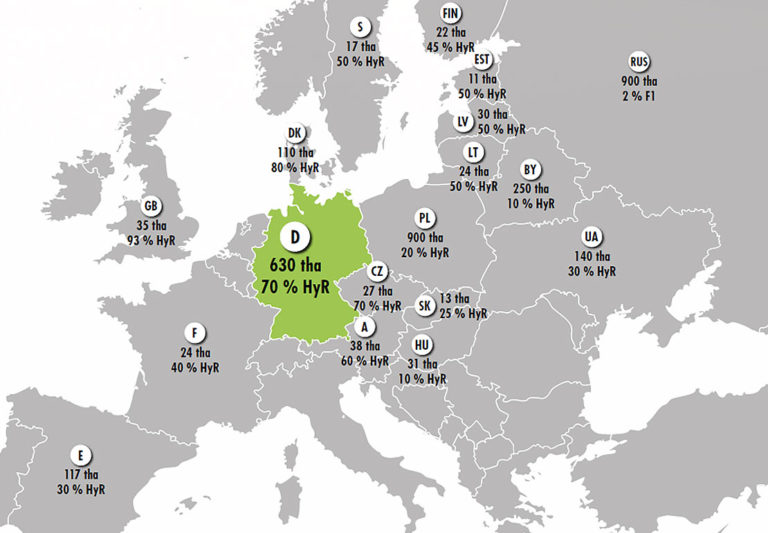Markets and Market Development
In terms of area under cultivation rye plays a minor role compared to wheat, maize and rice. Crop production statistics show that rye, which is cultivated on two million hectares across Europe, only takes up about 3 % of the cultivated area.
The largest rye producers are Germany, Poland and Russia. The proportion of hybrid rye varies greatly from country to country. Hybrid market shares are very high in Germany (70 %), Denmark (80 %) and Great Britain (93 %) while they are still at a much lower level in many countries of Eastern Europe. However, there is an upward trend throughout Europe.
Key Markets

From the years 2013 to 2018 the areas under rye cultivation were decreasing. Farmers seemed to have forgotten about many production advantages of rye. Rye was pushed to very light soils by other cereals.
Today, however, agriculture is in the process of questioning and reorienting itself. But whether conventional, integrated or organic farming – professional farming strategies should not lose sight of the actual main production objective of crop cultivation. To achieve the highest possible yields! Awareness and also commitment of arable farmers to sustainable cultivation methods have grown. In the years 2019 and 2020 the rye production area has successively increased throughout Europe. For example, the area under cultivation in Germany has grown by 5.6 percent although the total cultivated area of winter cereals fell by 3.8 percent.
Currently, rye is the only cereal with an increasing area under cultivation. There are many reasons for this: increased use in pig feeding, shortage of feedstuff/substrate, decline in oilseed rape production as well as the very crucial factor yield stability. Again and again, extreme weather conditions set the limits in crop production. Weather extremes are increasing and therefore the risk of crop losses or even crop failure.
Hybrid rye is by far the most efficient cereal achieving the highest yields with limited water and nutrient supplies at the lowest pesticide input. The use of rye is very versatile. Many advantages suggest that in future rye should be cultivated again on loam soils.
